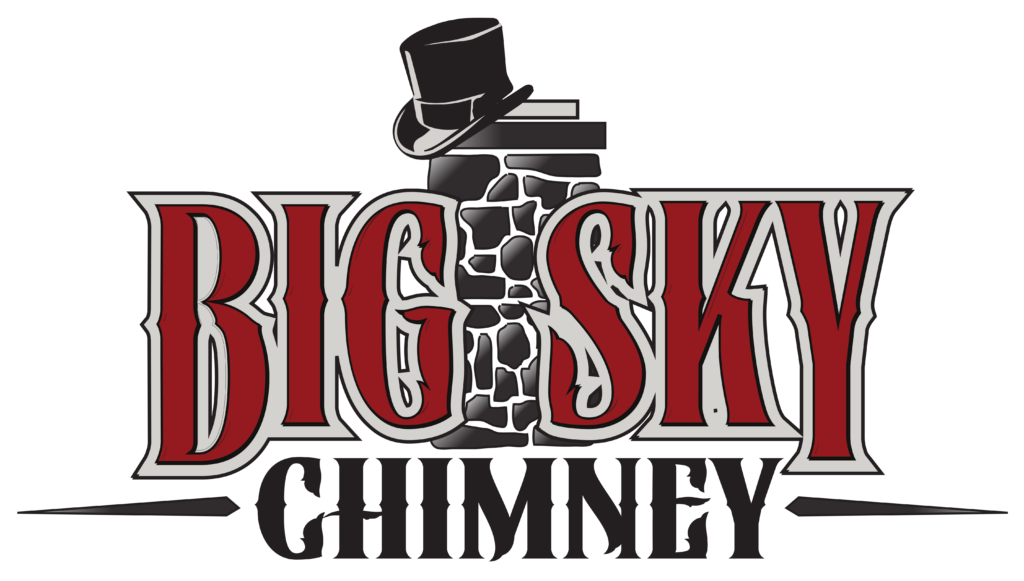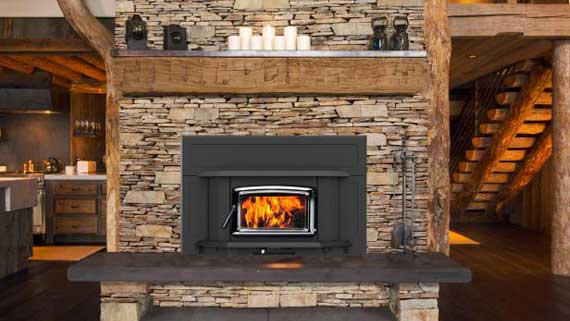Burning hardwood and burning pine in your wood stove have different characteristics and considerations:
- Heat Output and Duration:
- Hardwood, such as oak, ash, or hickory, mesquite, and pacific coast madrona typically burns hotter and longer than pine. It produces more heat per volume of wood and tends to create longer-lasting fires, making it a popular choice for heating homes during the colder months.
- Pine, on the other hand, burns more quickly and may produce less heat compared to hardwood. It is softer and less dense than hardwood, resulting in faster combustion and shorter burn times. It is what is readily available from most firewood suppliers, and from harvesting yourself in the national forest.
- Resin Content and Creosote Buildup:
- Pine contains higher levels of resin compared to hardwood. When burned, pine releases creosote, a sticky and flammable substance that can accumulate in the chimney. Excessive creosote buildup increases the risk of chimney fires. Therefore, it’s essential to monitor and clean the chimney more frequently when burning pine to reduce this risk.
- Hardwood tends to produce less creosote compared to pine. Regular chimney maintenance is still necessary to remove any creosote buildup and ensure safe operation, though there is significantly less creosote build-up with hardwood VS any pine species.
- Scent and Aesthetics:
- Some people enjoy the aroma produced by burning pine, which can impart a pleasant scent to the indoor environment. However, others may find the smell of burning pine resin too strong or resinous.
- Hardwood generally burns with a milder scent compared to pine and may be preferred by those who prefer a more subtle fragrance or want to minimize indoor odors. The use of hardwood also reduces the amount of splitting and hauling of wood but is heavier than pine species.
- Availability and Cost:
- The availability and cost of hardwood is more difficult than pine in our area. In Montana, hardwood doesn’t grow in enough volume for most wood suppliers to offer it. Hardwood is available in our area, but it comes at a higher cost because it has to be shipped in from Washington State, Oregon, Northern California, and Texas. Its greater density and longer burn time, with greater BTU output make it better for those looking for extended burn times and better heat output.
- Pine, being more abundant and faster-growing than many hardwood species, is a more sustainable energy and is abundant in our area making it more affordable.
- Environmental Considerations:
- Both hardwood and pine can be sustainable options for wood stove fuel if sourced responsibly from well-managed forests or obtained as a byproduct of land clearing or sustainable forestry practices.
- Using locally sourced wood can reduce transportation emissions associated with fuel delivery, contributing to lower carbon footprints.
Ultimately, the choice between burning hardwood and burning pine in your wood stove depends on factors such as heat output, availability, cost, chimney maintenance requirements, personal preference for scent, and environmental considerations. It’s essential to properly season and store wood, regardless of type, to ensure efficient and safe combustion in your wood stove. Pine can typically cure in 6-9 months whereas Hardwood will take up to 2 years depending on species. Curing time can be reduced by splitting and stacking during the summer months. Stack your wood outdoors and cover only the top of your wood pile with a tarp to prevent the wood from absorbing snowmelt or rain. Stacking and covering your wood pile allows airflow to pass between logs, helping to cure the wood.
Effects of water intrusion on a Masonry Chimney
Water intrusion into a masonry chimney can lead to various detrimental effects, potentially compromising the structural integrity of the chimney and the safety of your home. Here are some common effects:
- Brick and Mortar Deterioration: Water can penetrate the porous materials of bricks and mortar joints in the chimney. When water freezes and expands during cold weather, it can cause the masonry to crack, spall, or crumble over time. This deterioration weakens the chimney structure and can lead to significant damage if not addressed.
- Efflorescence: Water-soluble minerals in the masonry can be drawn to the surface by water evaporation, leaving behind a white, powdery residue known as efflorescence. While efflorescence itself may not be harmful, it can indicate moisture problems within the chimney.
- Mold and Mildew Growth: Moisture inside the chimney creates a conducive environment for mold and mildew growth. Mold and mildew not only contribute to unpleasant odors but can also pose health risks, especially for individuals with respiratory issues.
- Damaged Flue Liner: Water intrusion can damage the flue liner, which is essential for containing combustion byproducts and preventing them from leaking into your home. Cracks or deterioration in the flue liner can compromise its effectiveness, potentially leading to chimney fires or exposure to toxic gases like carbon monoxide.
- Rust and Corrosion: Water can also cause metal components within the chimney, such as the damper, flue cap, or fireplace insert, to rust and corrode over time. This corrosion weakens these components, reducing their functionality and lifespan.
- Chimney Leaks: Water intrusion through the chimney can result in leaks into the home’s interior. These leaks can cause water damage to ceilings, walls, and surrounding structures, leading to costly repairs and potential health hazards like mold growth indoors.
To prevent these effects, it’s essential to address any sources of water intrusion into the chimney promptly. This may involve repairing damaged masonry, installing a chimney cap or crown to prevent water entry, sealing mortar joints, and ensuring proper flashing and waterproofing around the chimney. Regular chimney inspections and maintenance by a qualified professional can help identify and mitigate potential water intrusion issues before they cause significant damage.
Improper clearances for woodstoves and chimneys
Improper clearances for woodstoves and chimney pipes can lead to a range of safety and performance issues. Here are some common problems associated with inadequate clearances on wood stoves and chimneys:
- Fire Hazard: One of the most significant risks is the potential for an unwanted structure fire. If combustible materials are too close to the stove or chimney pipe, they can ignite, leading to a dangerous structure fire. Improper clearances are the leading cause of structure fires due to improper installations. “Loss of property or life” is a common statement in most installation manuals when warning about clearances.
- Heat Damage: Improper clearances can cause nearby materials to overheat and become damaged. This includes nearby walls, floors, televisions, furniture, and any other combustible objects in the vicinity of the woodstove or chimney pipe.
- Carbon Monoxide Poisoning: In extreme cases, inadequate clearance can cause improper drafting, leading to the buildup of dangerous gases such as carbon monoxide inside the home. Carbon monoxide poisoning can be fatal if not detected and addressed promptly.
- Code Compliance: Building codes and regulations often mandate specific clearance distances for woodstoves and chimney pipes to ensure safety. Failure to comply with these regulations can result in a structure fire, loss of life, or loss of property. Always follow the installation manual for the wood stove and for the chimney system when installing a chimney and/or woodstove.
To address these issues, it’s essential to follow the manufacturer’s instructions and local building codes when installing a woodstove and chimney system. This includes ensuring proper clearance distances from combustible materials, using appropriate heat shields or insulation when necessary, and having the installation inspected by a qualified professional to verify compliance and safety. Be sure to ask your insurance company if installing your own wood stove and chimney is an option. Some insurance companies require that you use a certified chimney professional to install your wood stove and chimney.
When to replace factory-built fireplace Refractory Panels
Factory-built fireplace refractory panels, which are designed to withstand the high temperatures of a fire, typically need to be replaced when they show signs of wear or damage. Here are some indicators that it might be time to replace them:
- Cracks: If you notice cracks in the refractory panels, especially if they are significant or expanding, it’s time to replace them. Cracks can compromise the integrity of the panels and reduce their effectiveness at containing heat. A common rule to thumb is to replace the panel(s) when the crack is equal to or greater than the thickness of a nickel.
- Chips or Breaks: Any chips or breaks in the panels can allow heat to escape in unintended directions and can also indicate weakening of the metal material.
- Spalling: Spalling refers to the breaking off of small pieces of the panel’s surface. While small instances of spalling might not immediately necessitate replacement, extensive spalling can indicate that the panels are reaching the end of their lifespan.
- Excessive Wear: If the panels show signs of excessive wear, such as thinning or erosion of the material, they may no longer provide adequate protection and should be replaced.
- Discoloration: If the panels are significantly discolored or have turned a different color due to heat exposure, it could indicate that they have been damaged and are no longer functioning properly.
It’s important to regularly inspect your fireplace’s refractory panels for these signs of wear and damage and to replace them promptly when necessary to ensure the safety and efficiency of your fireplace. If you’re unsure whether your refractory panels need replacement, it’s a good idea to consult with a Certified Chimney Sweep for guidance.
When and Why should I have a level 2 chimney inspection?
A level 2 chimney inspection is recommended in several situations per the NFPA:
- After a Change in the System: Whenever there’s a significant change to the chimney system, like a change in fuel type, a new appliance installation, or changes in the chimney’s lining, a level 2 inspection is warranted to ensure the chimney can accommodate these changes safely.
- After a Chimney Fire: If your chimney has experienced a chimney fire, even a minor one, it’s crucial to have a level 2 inspection to assess the extent of damage and ensure the chimney’s structural integrity hasn’t been compromised.
- Before Property Transactions: Before purchasing or selling a property with a chimney, it’s wise to have a level 2 inspection. This thorough examination can uncover any hidden issues, ensuring that both parties are aware of the chimney’s condition.
- After an Environmental Event: Earthquakes & Lightning can compromise a chimney system and fireplace. Earthquakes can cause flue tiles in masonry chimneys to crack, break, and fall down the inside of the flue leading to blockage of the flue. The blockage can prevent flue gases from properly venting out of the home. Lightning strikes to the top of a chimney often cause the same cracking of the flue in masonry chimneys.
In summary, a level 2 chimney inspection is essential for ensuring the safety and functionality of your chimney system, particularly in cases of significant changes, after chimney fires, before property transactions, and after environmental events.

